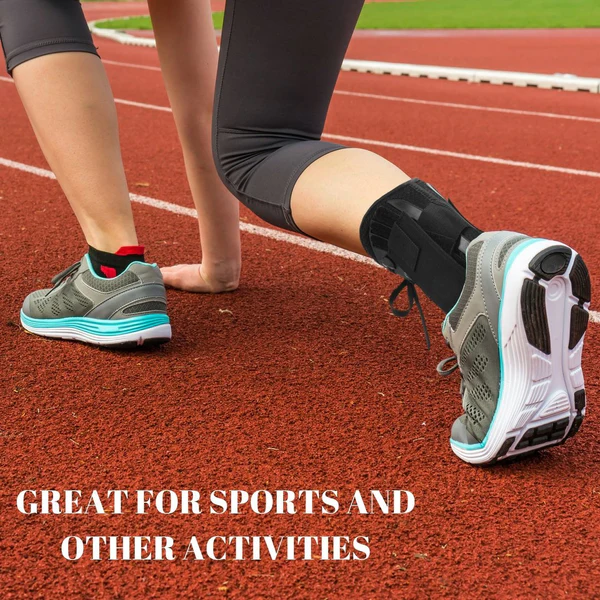
Wearing an Ankle Brace: Busting Myths and Preventing Repeat Injuries
Share
In "jumping" sports, athletes are at high risk of ankle injuries, resulting in time to sit on the bench. Next we discuss some common myths associated with ankle braces and injuries, and what research tells us about these myths.
Should I wear an ankle brace while sleeping or overnight?

Myth 1: Ankle braces prevent all ankle injuries.
Some coaches insist their players wear braces to prevent ankle sprains, while some opt to wear them. There are many studies pointing to the use of ankle braces after a first ankle injury to reduce the incidence of recurrent sprains. Having said that, athletes can wear them if they feel safer without an ankle injury.
"The decision to support is entirely dependent on a combination of injury history and future injury risk," Dr. Page said. Your risk is higher if you've injured your ankle before, or if you're participating in jumping sports (as opposed to running, where the risk of ankle injury is much lower). The disadvantage of wearing a brace is that you may reduce mobility for stability. Is it really worth it for healthy ankles when your performance in low-risk sports like jogging may be slightly affected? maybe not.
Myth #2: Ankle braces increase the chance of knee injuries.
The force on the knee after jump landing has been studied. Those researchers hypothesized that if you eliminated ankle motion, you would need more knees. Because they found that when an athlete wears an ankle brace, there is extra pressure on the knee, so it makes sense that this could leave the athlete vulnerable to injury. However, studies have shown that wearing ankle braces does not increase knee injuries.
"There is no evidence that wearing an ankle brace increases lower extremity injuries; however, there is evidence that in a laboratory setting, wearing a brace during jump landings changes the forces on the knee joint. But you can't automatically say it will cause harm, because There is no data to support this claim," Dr Page said.
Myth 3: Wearing an ankle brace can cause ankle weakness
This one is very simple. It does not change when testing the strength before wearing the ankle brace and after using the ankle brace for a long time. "There's a misconception that if you're braced, you don't need to use the ankle as much, so people conclude without evidence that they lose strength; however, there's no research to prove this.
Brace It: When to Use Ankle Brace
Back in the early 1990s, ankle braces began to appear more frequently on sports fields and sports fields due to improved designs and less expensive than duct tape to secure an athlete's ankle. Ankle braces are ubiquitous today and come in many different designs, even sports-specific, to provide extra support after an injury, or to prevent ankle sprains in the first place.
Using ankle braces to prevent ankle injuries is becoming more common, and coaches, parents, and athletes often ask me if it's worth wearing an ankle brace. Current research suggests that the use of ankle braces in high school-age athletes reduces the incidence, but not severity, of acute ankle injuries. Ankle braces are not shown to reduce the severity of ankle, knee, or other lower extremity injuries.
Ankle ligaments, muscle and tendon units, and ankle bones form the internal support to keep the ankle secure. These internal supports are a vital link from your feet all the way to your hips for optimal performance. Ankle braces act as external support to limit certain movements, such as plantar flexion/varus (motion at the ankle joint that brings the foot down away from the leg and turns the foot inward), and gives you an idea of where the ankle joint is in space. For maximum effect, the ankle brace should fit comfortably in the shoes you wear during the activity, which also helps with compliance with the brace.
After an ankle injury, it is important to include rehabilitation as part of your treatment plan. Often, when an athlete still has ankle pain or has not regained full function, it is because he or she has not had enough time to recover properly. After an ankle injury, your provider may recommend rehabilitation services. Balance, range of motion, strength, and endurance are important therapeutic and training factors that rehabilitation providers use specifically for rehabilitation. Exercising as directed can help ensure a safe return to activity and reduce the likelihood of re-injury.
Remember, wearing ankle braces is not a 100% panacea or guarantee against injury. Making an informed decision with your healthcare provider will help you decide if wearing an ankle brace is right for you.










